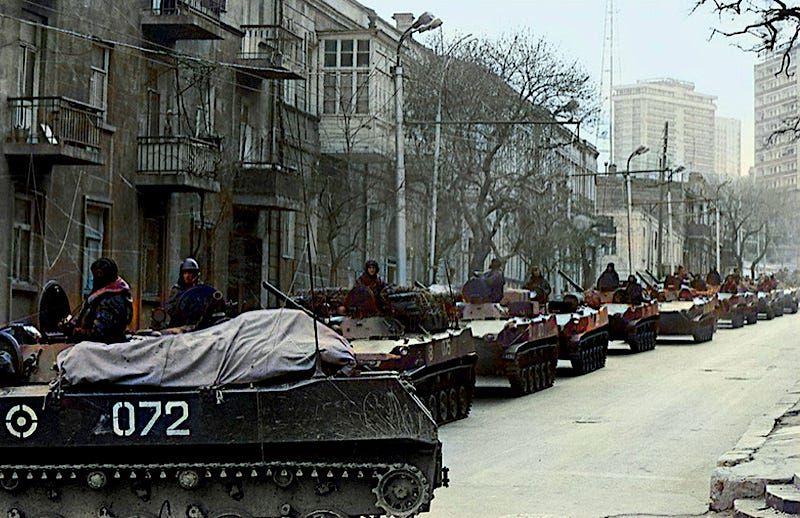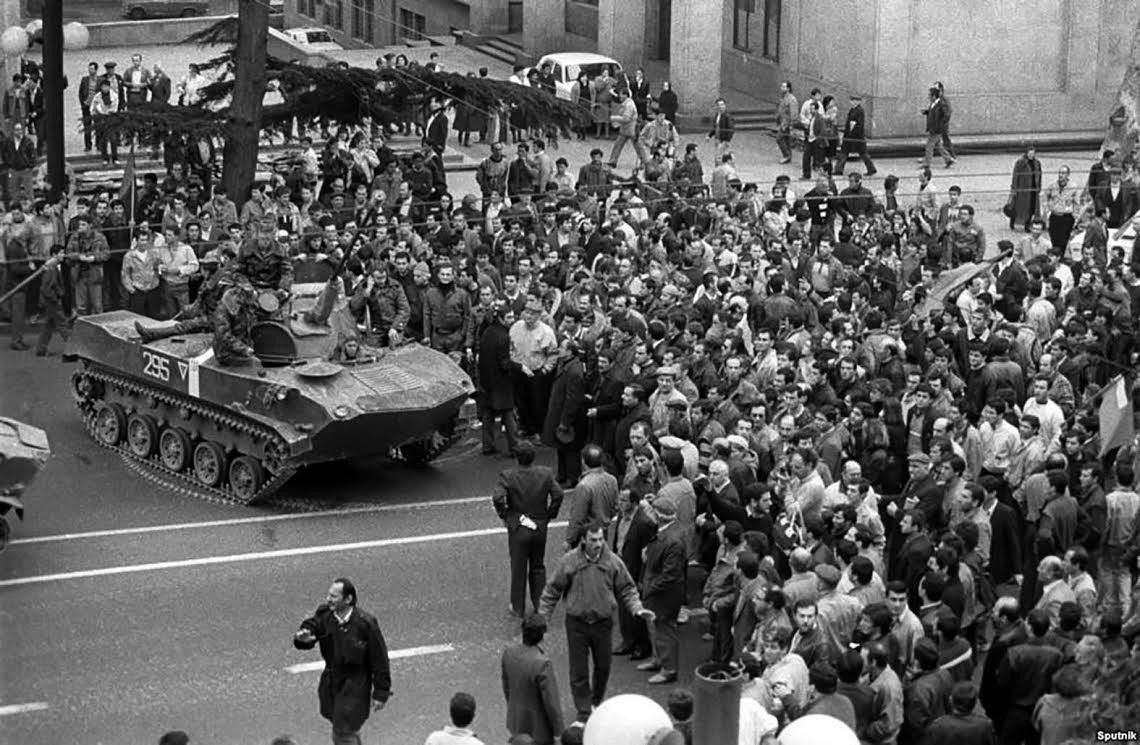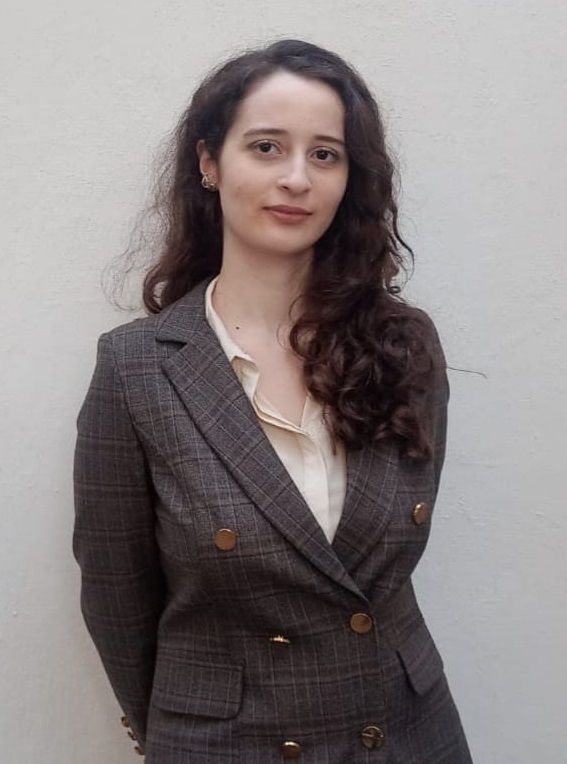January 20: History of national liberation written in blood

Even though 34 years have passed, when you listen to those who witnessed that history, you start to remember an event as if it happened yesterday. The night of 19th to 20th, 1990 was such a Saturday night that it is impossible to forget that date.
Perhaps, the night of January 19, 1990 was one of the ordinary nights in the collapsing Soviet Union, but in Azerbaijan, people sacrificed their lives in front of tanks and shells for the sake of freedom and sovereignty...
 You were expecting to return
home from work when you noticed tanks outside your window and heard
gunfire coming from the streets. Your family is the first thing
that comes to mind when you're worried; you should see them. Using
the megaphones of passing cars on the city's streets, they summoned
the people who love their country to the 11th Golden Army Square
after nine o'clock at night. When you step outside the work, the
scene is even more horrifying: there is a blood fountain in the
street, and people are erecting barriers in front of women and
children to keep them safe, says one of the witnesses of the
event.
You were expecting to return
home from work when you noticed tanks outside your window and heard
gunfire coming from the streets. Your family is the first thing
that comes to mind when you're worried; you should see them. Using
the megaphones of passing cars on the city's streets, they summoned
the people who love their country to the 11th Golden Army Square
after nine o'clock at night. When you step outside the work, the
scene is even more horrifying: there is a blood fountain in the
street, and people are erecting barriers in front of women and
children to keep them safe, says one of the witnesses of the
event.
You may argue, that they are unarmed and defending the populace from armed individuals and tanks. Is there anything that they could do to those people? But neither of you could have predicted that the jarring Soviet soldier tank, the military hardware provided by Baku oil, would turn on its weapons, shoot, and then drive over the people.
When you finally return home in the morning and discover that your mother and sister are still alive, hug them goodbye with a sense of relief before returning to the streets to keep others safe. Nevertheless, they shoot you from behind while wearing your favorite police outfit, the entire thing is covered in blood. Sensing the warmth of blood you flee from the place so that your own people can hide and provide for you. Things go wrong, you bleed heavily, and ironically, the USSR weapon's bullet struck your communist party ticket. Finally, someone had been able to take you to the hospital. You eventually begin to feel cold you understand, it's too late, but you don't want to die; you have too much life still to live. You haven't even had a chance to see your unborn daughter; your mother is sick and unable to handle your death. There are a lot of things that you want to tell your mother, but all you manage to utter is, "Just tell my mum..."
This is the story of Telman Baghirov, one of the martyrs of January 20th, who was brutally murdered by Russian soldiers. Similar to Telman Baghirov’s death, the incident that resulted in the deaths of 150 people—some of whom were just starting their careers, others were just beginning their lives—had one thing in common: none of them had any kind of weapon to defend themselves against Soviet tanks and other weapons. The year 1987 saw the beginning of the events that would culminate in the tragedy of 1990, as efforts were made to incorporate Garabagh into Armenia and to drive out Azerbaijanis from their ancestral villages in Armenia. Nevertheless, rather than averting these escalating tensions, the Soviet leadership perpetrated a heinous crime against the people of Azerbaijan.
On the night of January 19–20, military units from the USSR Ministry of Defense, State Security Committee, and Ministry of Internal Affairs entered Baku and the surrounding regions on orders from Mikhail Gorbachev, who is subsequently known for winning the Nobel Peace Prize. Gorbachev decided to resolve the issue "peacefully," massacring the civilian population with heavy military equipment and other various forms of weaponry. Large numbers of special and internal forces from the Soviet army were stationed in Baku, where they treated the civilian populace inhumanely. Before a curfew was declared, the army had brutally killed 82 citizens and seriously injured 20 more. A few days following the declaration of the curfew, 21 further civilians were killed in Baku. Eight other civilians were killed on January 25 in Neftchala and January 26 in Lankaran in regions where a curfew had not been implemented.

Thus, as a result of the illegal deployment of troops, 150 in Baku and the regions of the republic people were killed, 744 people were injured, 841 people were illegally arrested, and 112 of them were taken to different cities of the USSR and kept in prisons. 200 houses by military personnel and apartments, 80 cars, including ambulances, were destroyed by incendiary bullets a large amount of state property and private property was destroyed as a result of fires.
The office of Azerbaijan's permanent representation in Moscow was visited by national leader Heydar Aliyev and his family on January 21, 1990, shortly after the massacre. In addition to expressing support for his people, he harshly condemned the Soviet leadership for carrying out the horrific tragedy and named those in charge of it:
"I view the events that transpired in Azerbaijan as a breach of the rule of law, democracy, and humanity as well as the fundamentals of constitutional state building. If the top party leadership had taken the appropriate action at the outset of the Nagorno-Karabakh events, we would not have seen the escalation of tensions that resulted in the military attack that killed civilians on January 19–20, 1990. Everyone convicted of this act ought to get the proper punishment."
In actuality, Soviet troops reoccupied Baku 70 years after Bolshevik troops had done so in April 1920. This planned act of aggression threatens Azerbaijan's democracy and its people. Its goals include undermining the country's independence movement, demeaning the populace, and striking a moral blow to them. On the contrary, this momentous occasion was crucial in shaping the national character of Azerbaijan and signaled the beginning of the country's return to freedom. The January catastrophe provided a powerful push to the Azerbaijani people's independence movement and transformed a national liberation movement into a political reality.
Azerbaijani people were unfazed by the automatic bayonets and tank guns aimed at them gathered on Azadlig Square for their martyrs’ burial ceremony on January 22, in defiance of the emergency declaration. For forty days, the people of Azerbaijan grieved. The people went on a 40-day strike in protest despite having to face starvation.
On March 29, 1994, Azerbaijan's legislative body, Milli Majlis, issued a related resolution on national leader Heydar Aliyev's request, marking the first political and legal recognition of the January 20 tragedy. The resolution stated:
"The Soviet Union's deployment of troops to Baku and other regions, along with the ruthless killing of civilians, must be regarded as a military aggression and crime of the totalitarian communist regime against the people of Azerbaijan. The intent was to suppress, break the confidence and will of a people who peacefully demanded a new democratic and sovereign state and to humiliate their national identity as a show of Soviet army power."
The people of Azerbaijan honor and never forget the remembrance of the martyrs. Thousands of people gather in the Alley of Martyrs on January 20 of each year to pay their condolences by laying flowers, saying prayers for the victims, and condemning the culprits who caused the tragedy. At noon, the flag is lowered on all buildings across the country, and vehicles, trains, and ships come to a halt for the national moment of silence, reminiscent of when the lives and sentences of those individuals had halted abruptly in 1990.
---
Follow us on Twitter @AzerNewsAz
Here we are to serve you with news right now. It does not cost much, but worth your attention.
Choose to support open, independent, quality journalism and subscribe on a monthly basis.
By subscribing to our online newspaper, you can have full digital access to all news, analysis, and much more.
You can also follow AzerNEWS on Twitter @AzerNewsAz or Facebook @AzerNewsNewspaper
Thank you!

